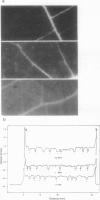Abstract
The effect of short-term water stress on photosynthesis of two sunflower hybrids (Helianthus annuus L. cv Sungro-380 and cv SH-3622), differing in productivity under field conditions, was measured. The rate of CO2 assimilation of young, mature leaves of SH-3622 under well-watered conditions was approximately 30% greater than that of Sungro-380 in bright light and elevated CO2; the carboxylation efficiency was also larger. Growth at large photon flux increased assimilation rates of both hybrids. The changes in leaf composition, including cell numbers and sizes, chlorophyll content, and amounts of total soluble and ribulose-1,5-bisphosphate carboxylase/oxygenase (Rubisco) protein, and in Rubisco activity and amount of ribulose-1,5-bisphosphate (RuBP) were determined to assess the factors regulating the differences in assimilation of the hybrids at high and low water potentials. The amounts of chlorophyll, soluble protein, Rubisco protein and the initial activity of Rubisco and its activation state did not differ significantly between hybrids. However, unstressed leaves of SH-3622 had more, smaller cells per unit area and 60% more RuBP per unit leaf area than that of Sungro-380. Water stress developing over 4 days decreased the assimilation of both hybrids similarly. Changes in the amounts of chlorophyll, soluble and Rubisco protein, and Rubisco activity and activation state were small and were not sufficient to explain the decrease in photosynthesis; neither was decreased stomatal conductance (or stomatal “patchiness”). Reduction of photosynthesis per unit leaf area from 25 to 5 micromoles CO2 per square meter per second in both hybrids was caused by a decrease in the amount of RuBP from approximately 130 to 40 micromoles per square meter in SH-3622 and from 80 to 40 micromoles per square meter in Sungro. Differences between hybrids and their response to water stress is discussed in relation to control of RuBP regeneration.
Full text
PDF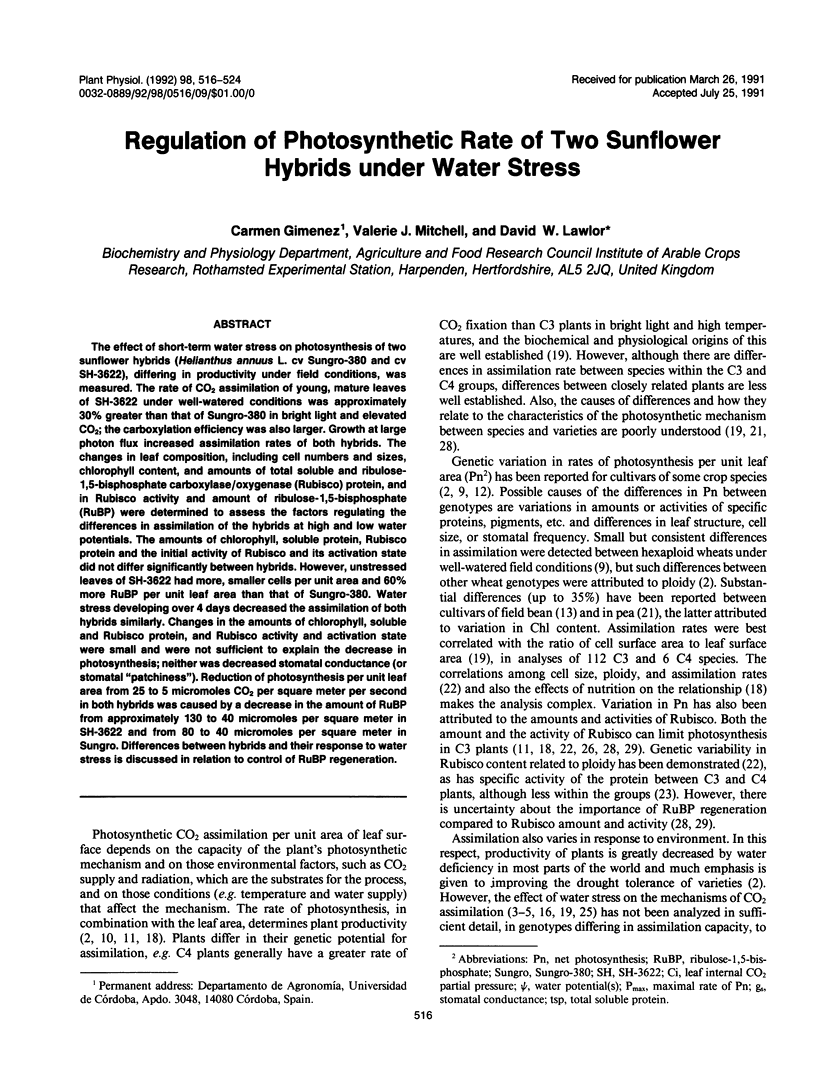
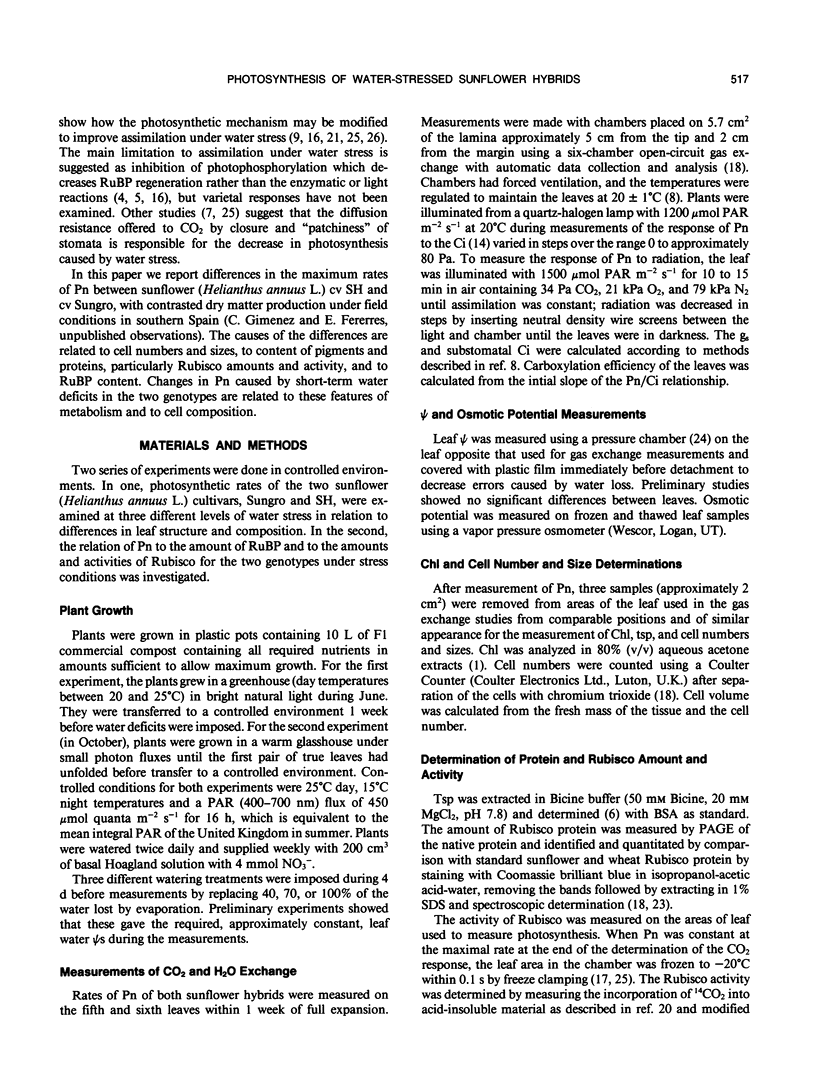
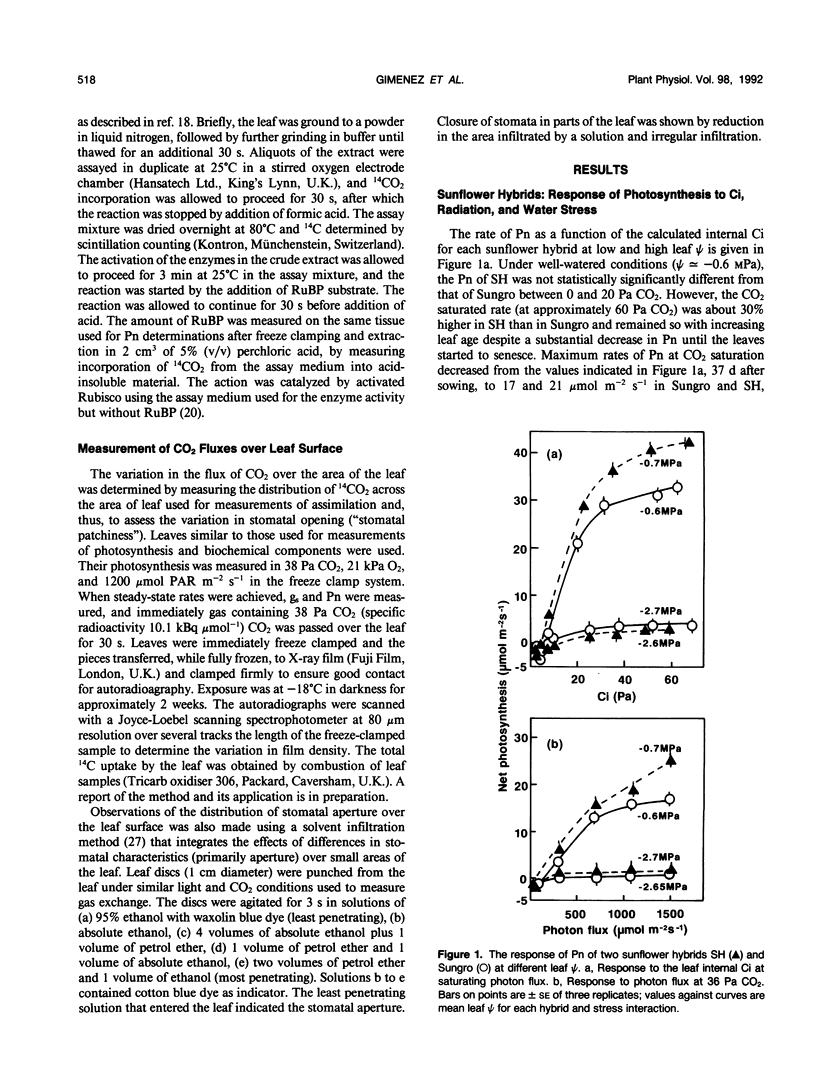
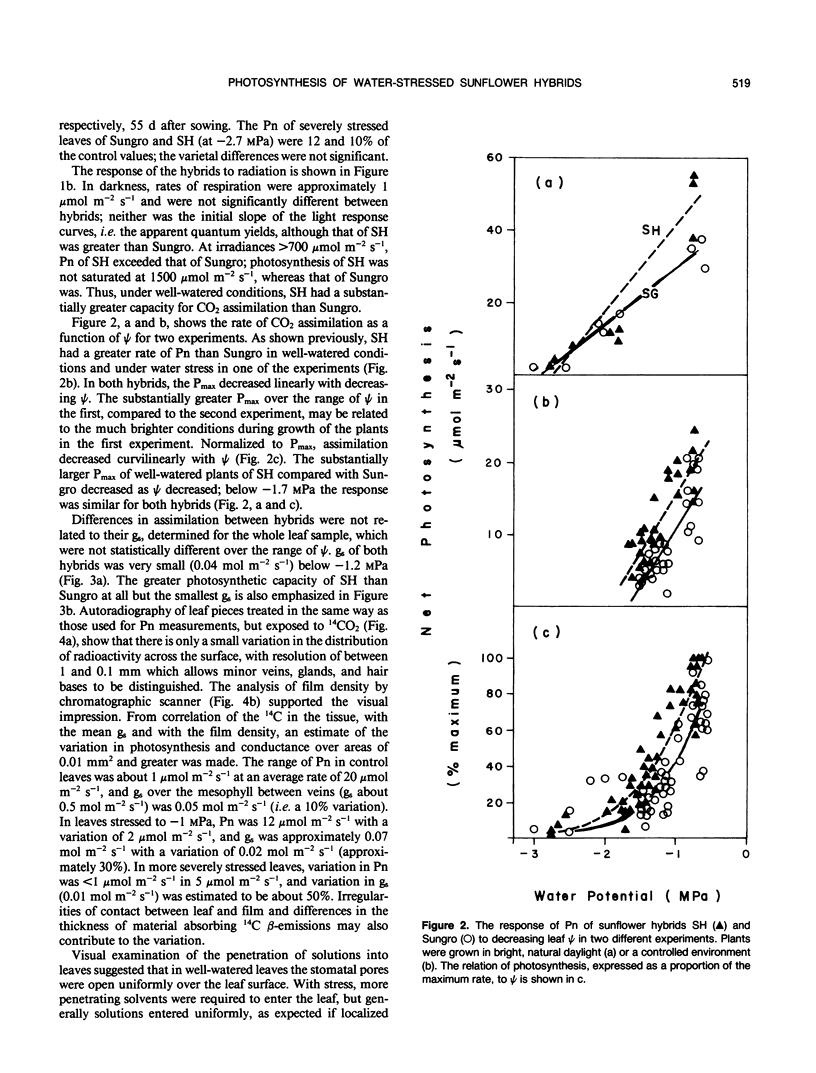
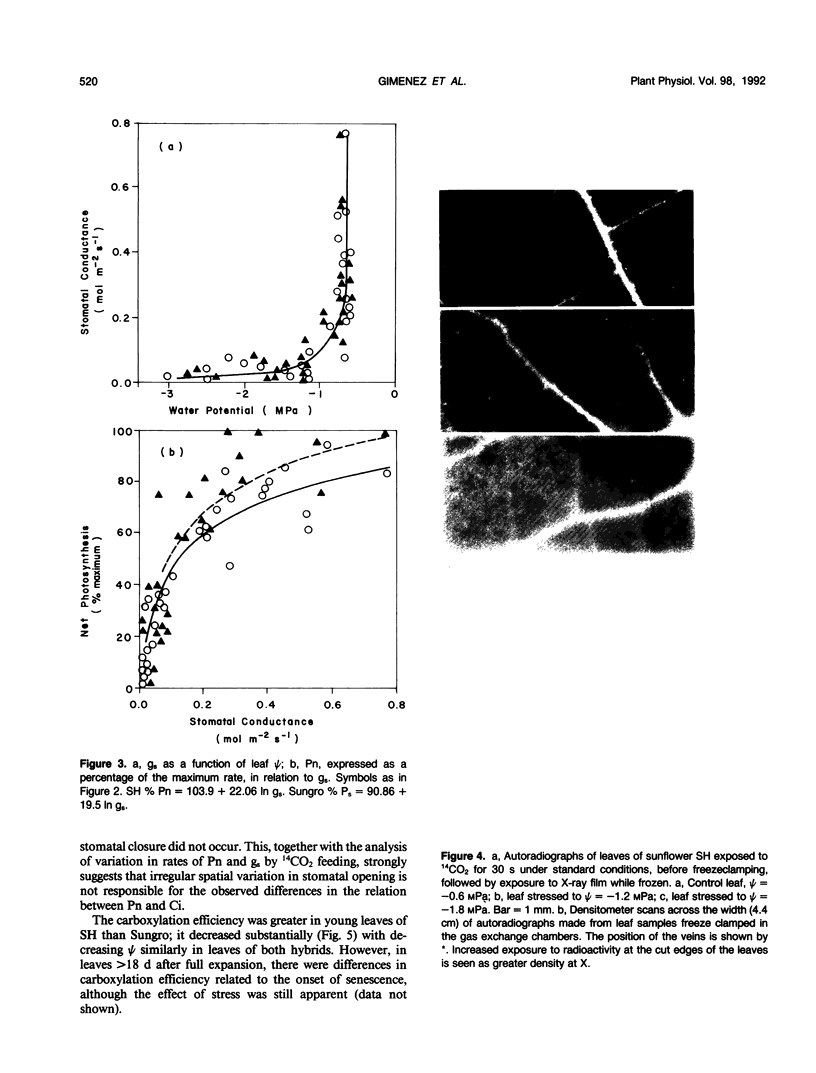
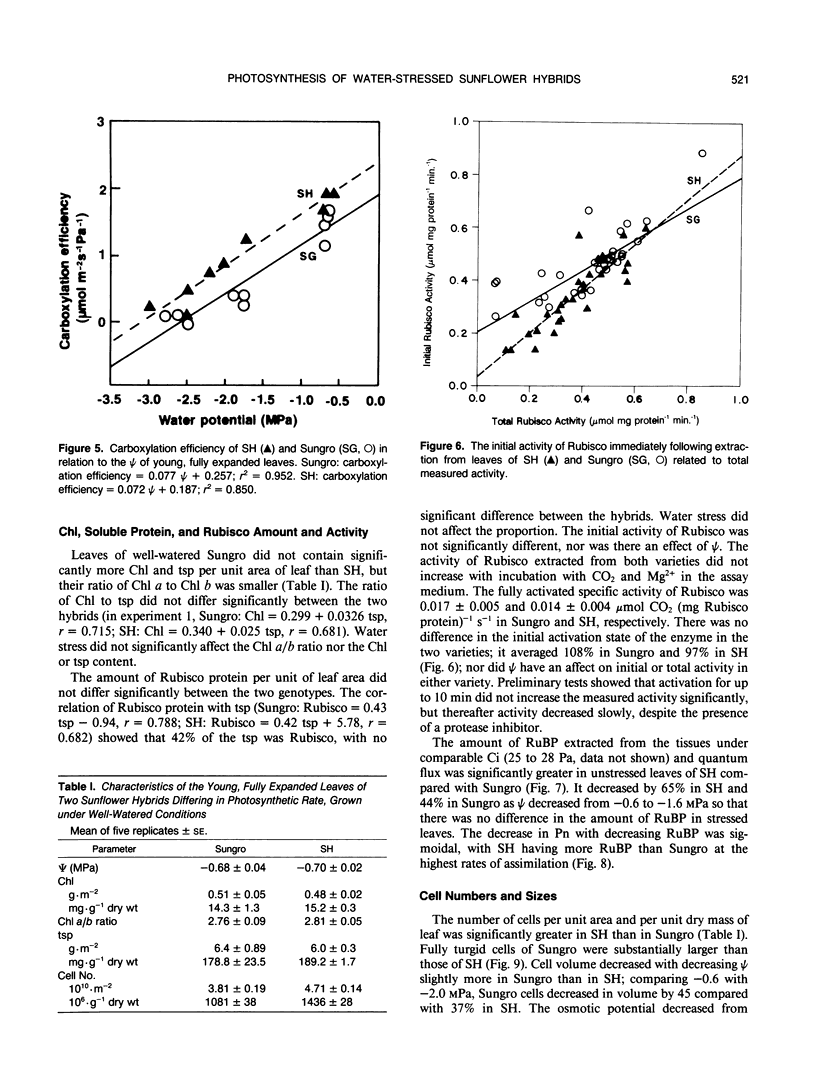
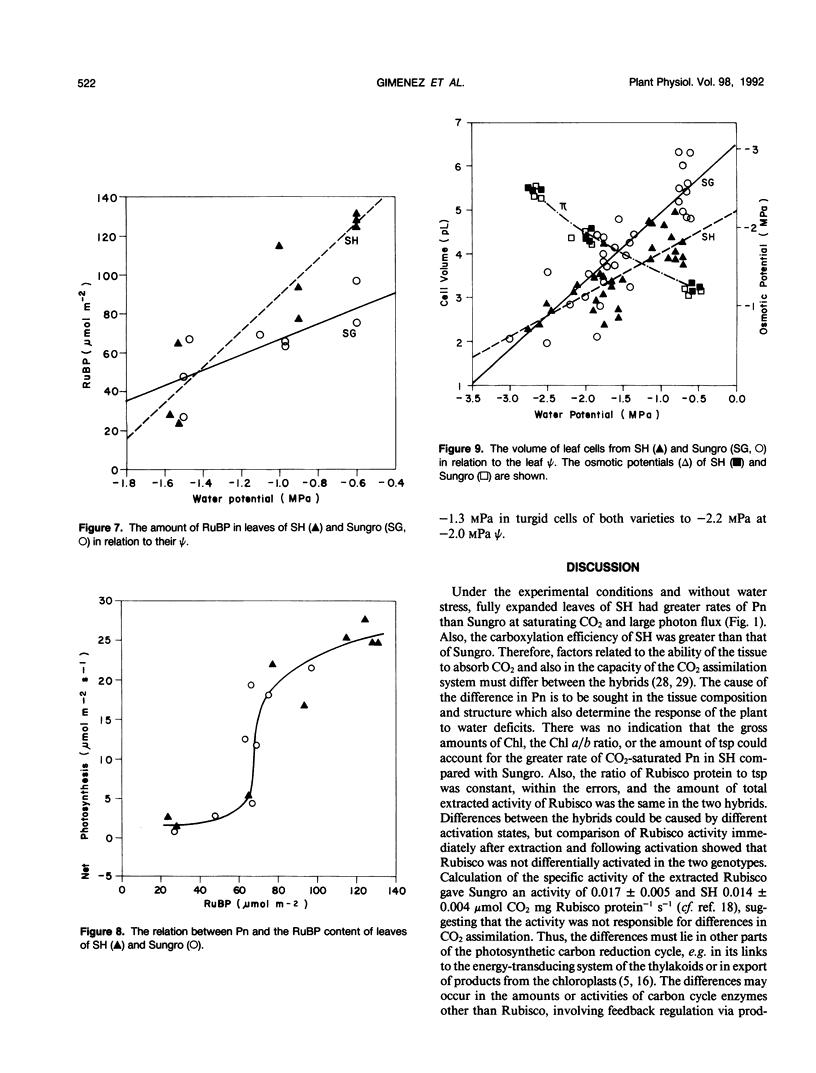
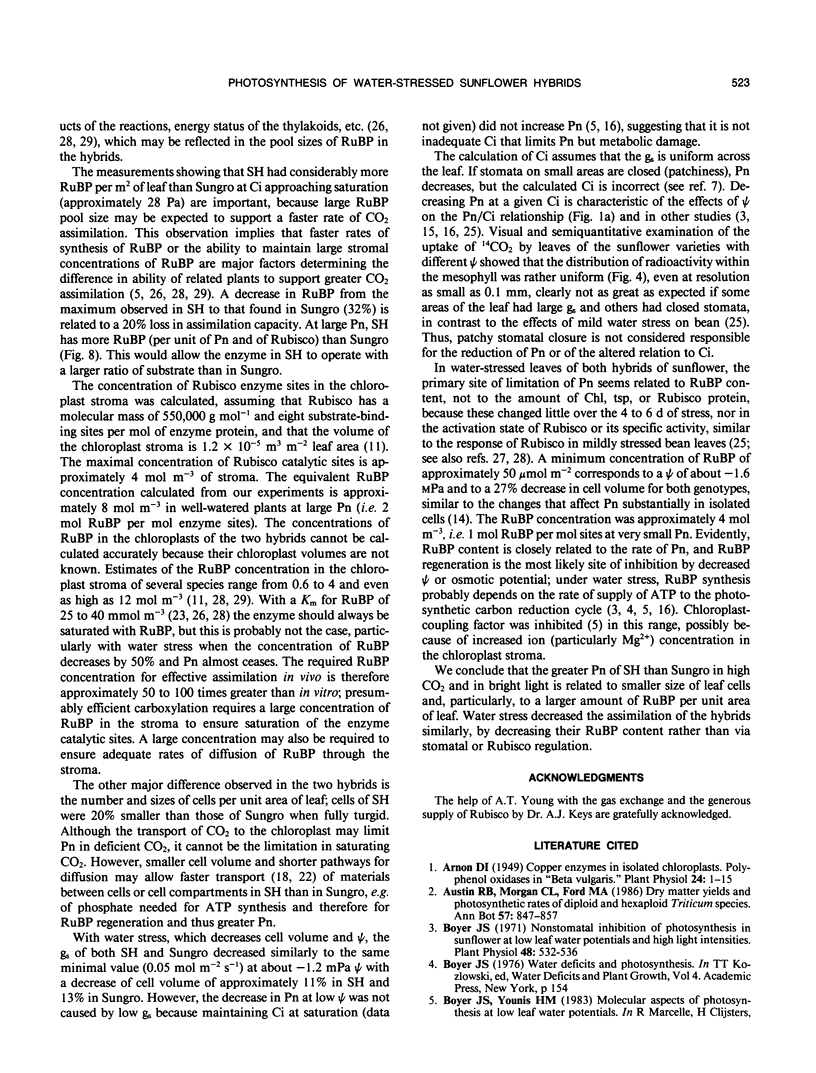
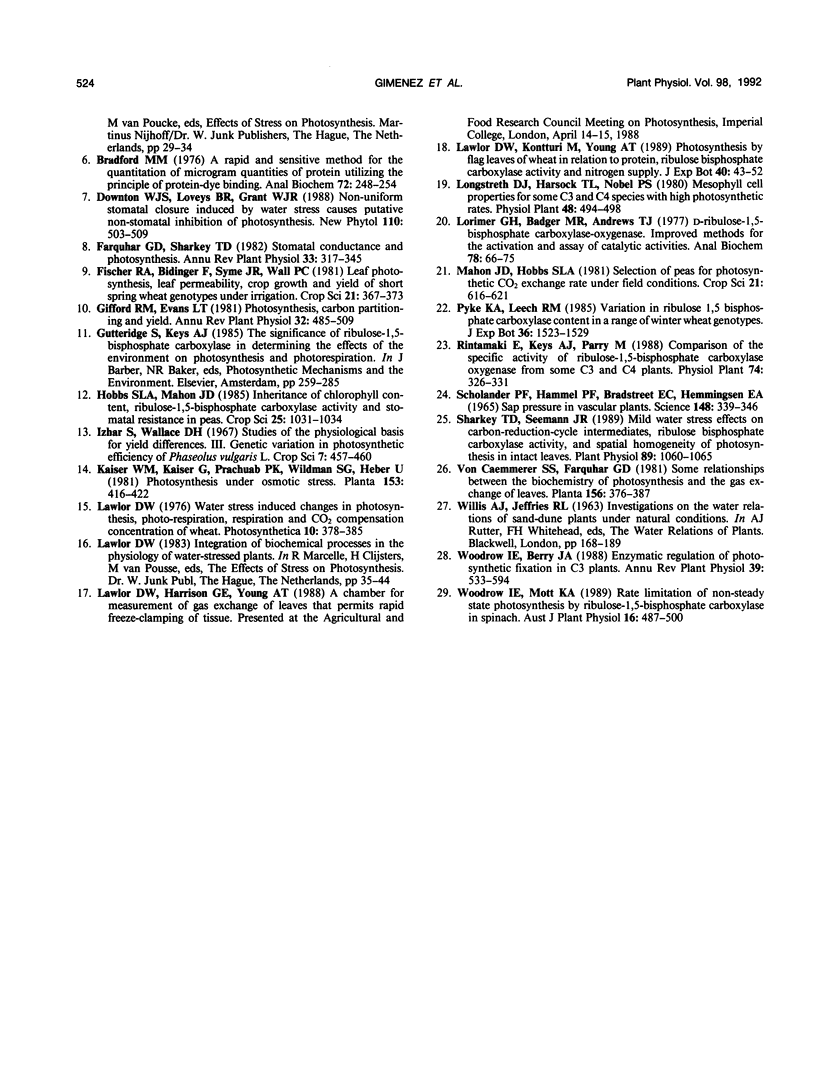
Images in this article
Selected References
These references are in PubMed. This may not be the complete list of references from this article.
- Arnon D. I. COPPER ENZYMES IN ISOLATED CHLOROPLASTS. POLYPHENOLOXIDASE IN BETA VULGARIS. Plant Physiol. 1949 Jan;24(1):1–15. doi: 10.1104/pp.24.1.1. [DOI] [PMC free article] [PubMed] [Google Scholar]
- Boyer J. S. Nonstomatal inhibition of photosynthesis in sunflower at low leaf water potentials and high light intensities. Plant Physiol. 1971 Nov;48(5):532–536. doi: 10.1104/pp.48.5.532. [DOI] [PMC free article] [PubMed] [Google Scholar]
- Bradford M. M. A rapid and sensitive method for the quantitation of microgram quantities of protein utilizing the principle of protein-dye binding. Anal Biochem. 1976 May 7;72:248–254. doi: 10.1016/0003-2697(76)90527-3. [DOI] [PubMed] [Google Scholar]
- Lorimer G. H., Badger M. R., Andrews T. J. D-Ribulose-1,5-bisphosphate carboxylase-oxygenase. Improved methods for the activation and assay of catalytic activities. Anal Biochem. 1977 Mar;78(1):66–75. doi: 10.1016/0003-2697(77)90009-4. [DOI] [PubMed] [Google Scholar]
- Scholander P. F., Bradstreet E. D., Hemmingsen E. A., Hammel H. T. Sap Pressure in Vascular Plants: Negative hydrostatic pressure can be measured in plants. Science. 1965 Apr 16;148(3668):339–346. doi: 10.1126/science.148.3668.339. [DOI] [PubMed] [Google Scholar]
- Sharkey T. D., Seemann J. R. Mild water stress effects on carbon-reduction-cycle intermediates, ribulose bisphosphate carboxylase activity, and spatial homogeneity of photosynthesis in intact leaves. Plant Physiol. 1989 Apr;89(4):1060–1065. doi: 10.1104/pp.89.4.1060. [DOI] [PMC free article] [PubMed] [Google Scholar]



